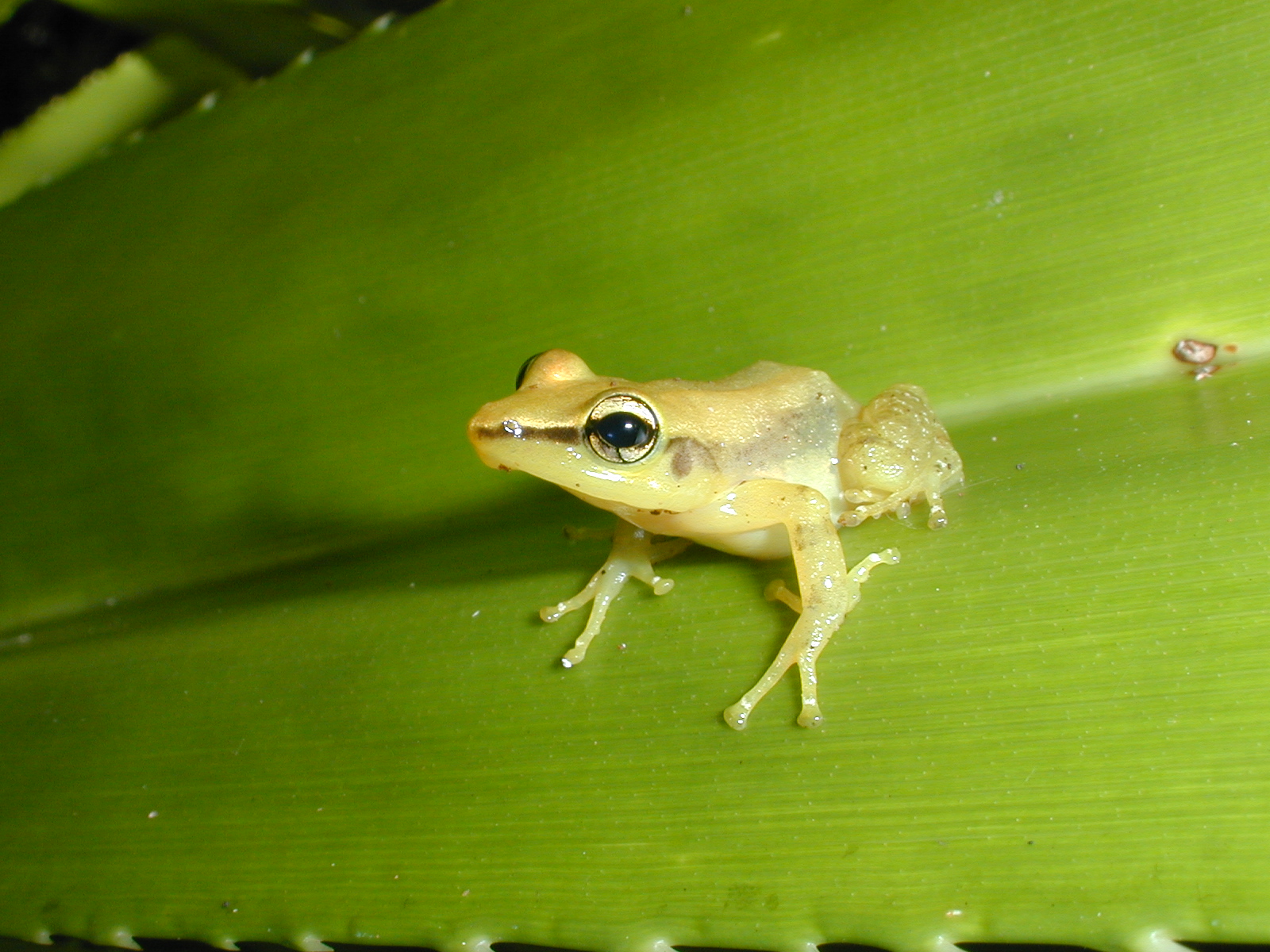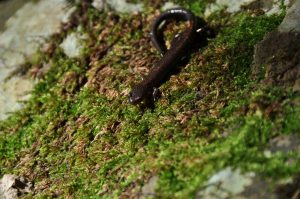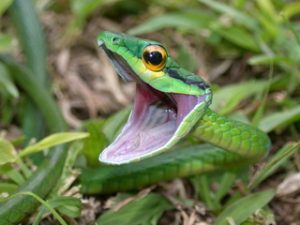About a month ago, I returned from my eighth research trip to the lovely and interesting islands of Trinidad and Tobago. In addition to my own work on frog ecology, evolution, behavior and conservation, I had four fabulous students from the College of Wooster accompany me. Erin Hodson (’15) undertook a compelling field project examining the attack rates of coral snakes and their harmless mimics using fake snakes fashioned out clay. Poor Erin (and her family and friends – thanks all!) hand-made four hundred and eighty of these snakes and got them down there in one piece. Many of these ‘snakes’ were attacked on both islands and initial results support Erin’s hypothesis of lower attack rates on Trinidad where venomous coral snakes occur, compared to Tobago where coral snakes are absent.
Sean Hackel (’15) examined the microhabitat use of Anolis richardii, a common but introduced anole on Tobago. A. richardii is native in Grenada where it has a sympatric competitor (A. aeneus) and has been studied by others previously. Sean wanted to study the introduced population in Tobago to see if there was any evidence of niche expansion via competitive release. No conclusions on that yet but what a place to do his research. A beautiful lizard and a beautiful study site.
David Raines (’15) spent his days (and nights) in Tobago tracking the romantic encounters of Tobago glass frogs. David located many calling male glass frogs, measured them and their calling sites for a number of different variables. He assessed the question: do some males get more matings than others? If so, why? No definitive answers yet (more later), but we made a number of interesting observations on the behavior of this handsome frog and had fun doing it (well, except for when we tripped on the slick stream rocks and got a unexpected bath at 1 am).
Lastly, Levi Fawcett (’15) continued in a long tradition of students who have studied various aspects of the biology of the Bloody Bay poison frog (which is neither poisonous nor restricted to the Bloody Bay area). By taking numerous photos of captured frogs, Levi plans to assess geographic patterns in coloration patterns, which previous observations have suggested is closely similar to the local rock color patterns. These frogs are darned hard to catch, but thanks to Levi (and David’s) efforts, we now have over 200 individuals photographed from over 15 different populations (a good start!). Now Levi plans to sit in front of a computer for the next 6 weeks extracting coloration data from his photos. Have fun Levi!



